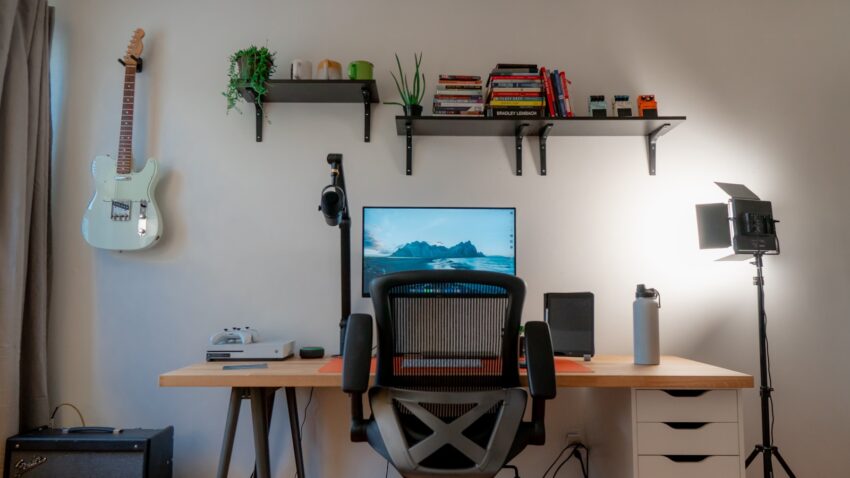If you’re a student, finding enough space to study, relax, and live comfortably can be a challenge, especially when you’re sharing a home or living in a small apartment. As academic and personal belongings start to pile up, your space can quickly feel cramped and chaotic. But what if you could magically create more room by simply rethinking the layout of your existing space?

Dividing up rooms in your home doesn’t require a renovation team or a hefty budget. With some creativity and a few practical solutions, you can carve out dedicated areas for studying, living, and everything in between! This not only helps in maintaining a more organized and tidy space but also ensures that you have a quiet corner to focus on your studies or unwind after a long day.
For instance, setting up a dedicated study area might just be the trick to boosting your productivity and could even help you produce work worthy of the best accolades. Services like Paper Writers 24 can support you along the way, helping you maintain high standards in your assignments. Let’s dive into some budget-friendly ways to create more room in your home, ensuring you have the perfect balance of work and play within your student abode!
Smart and Budget-Friendly Room Division Strategies
Use Furniture as Dividers
One of the simplest and most cost-effective ways to divide a room is by using furniture you already own. Bookcases and shelves are not only functional for storage but also serve as great room dividers. They provide privacy and help define separate areas without the need for permanent structural changes. Position them between living and study spaces, or use them to create a small home office area in a corner of your living room.
Invest in Dividing Screens
Folding screens can be picked up for relatively little cost and are perfect for students looking to add a bit of style and functionality to their living spaces. These movable screens help segregate parts of a room for different purposes, such as separating a study area from a sleep area. The best part? They can be easily folded and stored away when you need to open up your space again.
Curtains: A Flexible Solution
Curtains aren’t just for windows. They can also act as a flexible and inexpensive room divider. Install a ceiling track and hang a curtain to create a soft wall that can be pulled back whenever needed. This solution allows you to effortlessly switch between an open space and a more private, enclosed area. Choose a fabric that complements your room’s decor to add a touch of personality.

Practical Tips for Keeping Costs Down
DIY Projects
Embrace DIY projects to save money while adding unique elements to your room divisions. Upcycling old furniture, crafting homemade curtains, or building a simple bookshelf are all great ways to get involved and create custom solutions that fit your space perfectly.
Hunt for Bargains
Keep an eye out for deals at thrift stores, garage sales, and online marketplaces. Second-hand items can be incredibly cost-effective and may just require a little bit of cleaning or a quick paint job to fit well in your new layout.
Share and Swap with Friends
Talk to your friends and see if you can swap furniture or decor items. This can be a great way to refresh your space without spending any money and helps give new life to items that were otherwise going unused.
Advanced Room Division Techniques
Create Multi-Functional Zones
When dividing your space, think about creating zones that serve multiple purposes. For instance, a kitchen table can double as a study desk. Similarly, invest in a small rolling cart that can be used as a nightstand, extra kitchen storage, or even a portable study station. This approach not only saves space but also money, as each piece of furniture serves various needs.
Utilize Underutilized Spaces
Look for spaces that are often overlooked, such as under beds, above doors, or corners. Installing shelves above doors or in corners can provide extra storage space for books, supplies, or decorative items. Under-bed storage is perfect for out-of-season clothing, extra bedding, or even books and study materials, keeping them out of sight but easily accessible.
Strategies for Maintaining a Balanced Lifestyle
Schedule Regular Decluttering
To keep your newly organized space functional, schedule regular decluttering sessions. Keeping clutter at bay can help maintain a clear division of spaces and make small areas feel more spacious and welcoming.
This habit also encourages you to evaluate what items are essential and which can be donated or sold, helping keep your living environment minimalist and manageable.
Final Thoughts
Creating more space in your student home by dividing rooms is a fantastic way to ensure that every square foot of your living area works for you. By implementing these budget-friendly strategies, you can enjoy a functional, organized, and stylish space that caters to all aspects of your student life.
Remember, the goal is to make your home a comfortable place that supports both your studies and your well-being. With a little creativity and effort, you’ll find that a spacious, well-organized home is well within reach!
